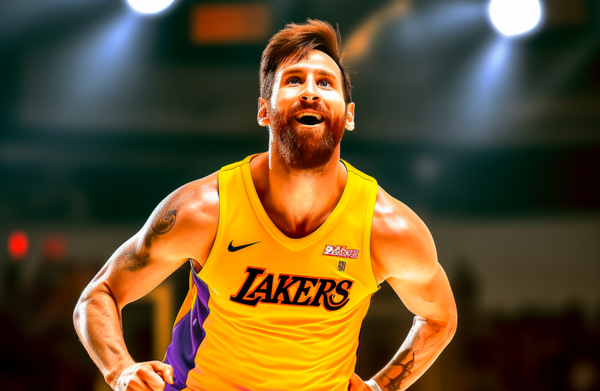Sports Broadcasting
Sports broadcasting is swiftly transforming, as emerging technologies and platforms reshape how fans interact with and view sports content. This evolution offers audiences more immersive and personalized viewing experiences than ever before.

The world of sports broadcasting and streaming has been undergoing a significant transformation, with streaming services capturing a larger share of the market and audiences increasingly embracing over-the-top (OTT) content[1]. This shift has led to new trends, innovative business models, and a reimagining of the future of sports consumption.
👀 Key Takeaways
- Streaming captured 35% of total TV time in August 2022, marking six consecutive months of viewership highs[1].
- Live sports are increasingly moving to streaming platforms, with Major League Soccer (MLS) signing an exclusive deal with Apple TV for live match broadcasts starting in 2023[3].
- Sports content accounted for over 95% of the most-watched programs in 2022[5].
- Automated sports broadcasting is becoming more accessible, with AI cameras enabling live streaming of even non-league soccer and little league baseball[2].
- Traditional broadcasters are expected to remain the main buyers of major sports rights for the foreseeable future, although their share will likely decrease[7].
🔍 Market Trends
- The rise of 'super' streaming platforms that offer multiple genres, including sports[2].
- Consolidation in the industry driven by the search for growth[2].
- Increasing focus on broadband infrastructure to support streaming growth[1].
- Experimentation with personalized, interactive, and real-time data analysis in streaming services[7].
- Shift towards direct-to-consumer (DTC) distribution strategies for live sports[8].
🏆 Top Businesses
- Apple TV: Exclusive streaming platform for MLS matches starting in 2023[3].
- Paramount+: Offers NFL, Uefa Champions League, Big Ten, Southeastern Conference (SEC), Serie A, and Coppa Italia[4].
- ESPN+: Provides access to NFL, MLB, NHL, PGA Tour, and Ultimate Fighting Championship (UFC) [4].
🧩 What If Scenarios
- What if streaming platforms start offering more tailored, personalized experiences for sports fans, including customized content and real-time data analysis[7]?
- What if traditional broadcasters lose a significant share of sports rights to streaming platforms, leading to a major shift in the sports media landscape[7]?
- What if AI-powered automated broadcasting becomes the norm, enabling even the smallest sports events to be streamed live[2]?
💡 Idea Generation
- Develop interactive features for streaming platforms that allow fans to engage with live sports content in new ways.
- Create personalized content recommendations based on users' favorite sports, teams, and players.
- Offer flexible, customizable subscription packages that cater to different sports fans' preferences.
- Leverage AI and machine learning to enhance the quality of automated sports broadcasts.
- Collaborate with sports leagues and teams to create exclusive, behind-the-scenes content for streaming platforms.
🔮 Future Impact
- Streaming platforms are likely to continue capturing a larger share of the sports broadcasting market, leading to increased competition for sports rights[1].
- Traditional broadcasters may need to adapt their strategies and invest in streaming capabilities to remain competitive[7].
- The sports media landscape could become more fragmented, with fans needing to subscribe to multiple platforms to access all their desired content[3].
- Innovations in personalization, interactivity, and real-time data analysis could revolutionize the way fans consume sports content[7].
As the sports broadcasting and streaming landscape continues to evolve, it's essential for fans, businesses, and industry professionals to stay curious and observant of emerging trends. By embracing new technologies and innovative approaches, the future of sports consumption can become more engaging, accessible, and personalized than ever before.
🚀 The Renaissance in Sports Broadcasting: From Linear to On-Demand 📺🌐
📊 Understanding the Digital Shift in Sports Consumption
In the last decade, the way we consumed sports underwent a seismic shift. It wasn’t just about moving from big screens to pocket screens, but a change in the entire ecosystem of sports viewership.
- The OTT Onslaught:
Sports, traditionally the stronghold of cable TV, saw an unexpected competitor: OTT platforms. The convenience of watching any sport, anytime, anywhere, without the constraints of scheduled programming, was a game-changer.
- More Than Just Watching - An Interactive Experience:
The next-gen streaming isn't about passive consumption. Platforms will allow users to immerse themselves - perhaps replaying that goal from a player’s perspective or joining a virtual huddle.
- Democratizing Sports Broadcasting with AI:
With AI and automated broadcasting, even the most grassroots level match in a remote village could get its moment of digital glory.
🔧 Innovations and Interventions
With the shift to digital, comes a plethora of innovations, promising unparalleled fan experiences.
- The Era of 'Hyper-Personalized' Sports Content:
Future platforms might use AI to analyze our emotions (maybe through wearables) and suggest content. Feeling low? Here’s a reel of your team’s top 10 victories.
- Virtual Reality (VR) & Augmented Reality (AR) Integration:
Imagine donning a VR headset and walking into a virtual stadium, filled with avatars of fans worldwide, watching a live game together, or using AR to get instant stats overlaid on a live match.
- Blockchain and Sports Streaming:
Blockchain can revolutionize ticketing for virtual events or even ensure genuine memorabilia for fans. An NFT of the winning goal, anyone?
💼 Industry Pioneers and New Entrants
The dynamics of the sports broadcasting industry are in flux, and new alliances and collaborations are forming.
- Diversification of Content:
Top streaming businesses are not merely focusing on game content. They’re diving into pre-game analysis, post-game breakdowns, behind-the-scenes footage, and even player lifestyle content.
- Collaboration Over Competition:
Instead of bitter rivalries, we might see more collaborations. Traditional broadcasters might team up with digital giants, leveraging their vast viewer base with tech expertise.
- The Sustainability Aspect:
Green streaming? Future platforms might highlight their eco-credentials – be it through sustainable server farms or even supporting green causes through part of their revenue.
🌟 Streaming Ahead
As the lines between traditional sports broadcasting and digital streaming blur, a hybrid future emerges. This future promises more than just content – it offers experiences, tailored to each viewer, ensuring that their heartbeats with every goal, basket, or boundary, no matter where they are. As we stand at this juncture, the play button beckons. The next chapter of sports viewing awaits! 📡🏟️🌐.





